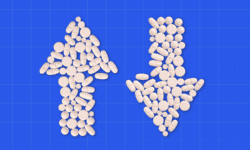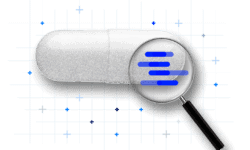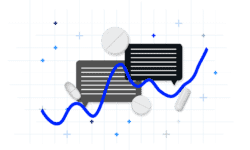President Biden’s Inflation Reduction Act (IRA) is making history within the pharmaceutical space: for the first time, Medicare will negotiate the prices of prescription drugs. This past week, the U.S. Department of Health and Human Services (HHS), through the Centers for Medicare & Medicaid Services (CMS), announced the first 10 drugs covered under Medicare Part D selected for negotiation.
The discussions with participating drug companies will take place through the rest of this year and into 2024, with negotiated prices becoming effective in 2026. Intervention on behalf of Medicare enrollees was desperately needed, as those who were prescribed the drugs selected for negotiation paid a total of $3.4 billion in out-of-pocket costs last year.
But these recent industry-changing developments have left pharma leaders with questions. What does the Inflation Reduction Act mean for my company? What drugs are next on the price-cutting chopping block? Where should I look to stay updated on these matters?
Below, we dive into answering these pressing queries and more.
The IRA and What It Means for Pharma
The IRA of 2022 has clear objectives: direct new federal spending toward reducing carbon emissions, fund the Internal Revenue Service, improve taxpayer compliance, and lower healthcare costs.
Through the IRA, Congress seeks to make prescription drugs more affordable with reforms that will reduce the price of drugs and limit out-of-pocket costs for many Medicare patients. In today’s healthcare reality, prescription drugs account for about 20% of Medicare patients’ out-of-pocket costs. Spending on prescription drugs continues to grow as other health spending has decreased.
The IRA has three key components that are expected to impact the US healthcare system:
- Drug price negotiation will allow the Centers for Medicare and Medicaid Services (CMS) to negotiate with drug manufacturers for high-spend drugs within the Medicare program—a first in the US.
- Prescription drug inflation rebates will require manufacturers to pay certain rebates for Medicare Part B and Part D drugs if drug price increases exceed the rate of inflation.
- The Medicare Part D redesign will reduce the maximum out-of-pocket expenses for Medicare Part D beneficiaries, shifting financial exposure to manufacturers and health plans.
The IRA’s impact on drug negotiations and financial exposure could also change the balance of technologies and disease states that are funded in the future.
Drug Prices Up for Negotiation
The U.S. Centers for Medicare & Medicaid Services (CMS) spent an astounding $50.5 billion between June 1, 2022 and May 31, 2023 (the time period used to determine which drugs were eligible for negotiation) on the 10 drugs selected for negotiations. This accounts for about 20% of the total cost of drugs in the Medicare prescription drug program known as Part D.
CMS will publish any agreed-upon negotiated prices for the selected drugs by September 1, 2024; with any agreed-upon price-cutting becoming effective starting January 1, 2026. And this is not the only instance Medicare will be negotiating drug prices. CMS will choose 15 more drugs covered under Part D for 2027 for price negotiations, another 15 the following year (including drugs covered under Part B and Part D), and up to 20 more drugs for each year after that, as outlined in the Inflation Reduction Act.
Until this past year, U.S. laws had prohibited Medicare from negotiating pharmaceutical prices as part of its prescription drug program that began about 20 years ago. The 10 initial drugs were chosen based on certain criteria set out by Medicare: they must be sold in pharmacies, not have substantial generic competition, and have been on the market for at least nine to 13 years for more complex biotech drugs.
The drugs selected for negotiations are as listed below:
- Eliquis: prevents and treats blood clots
- Jardiance: treats diabetes and heart failure
- Xarelto: prevents and treats blood clots; reduces risk for patients with heart disease
- Januvia: treats diabetes, heart failure and chronic kidney disease
- Farxiga: treats diabetes, heart failure and chronic kidney disease
- Entresto: treats heart failure
- Enbrel: treats rheumatoid arthritis, psoriasis and psoriatic arthritis
- Imbruvica: treats blood cancers
- Stelara: treats psoriasis, psoriatic arthritis, Crohn’s disease, ulcerative colitis
- Fiasp; Fiasp FlexTouch; Fiasp PenFill; NovoLog; NovoLog FlexPen; NovoLog PenFill: treats diabetes
Bristol Myers Squibb’s blood thinner Eliquis topped the list, accounting for a quarter of gross spending on Part D drugs in 2021, or $12.6 billion. Meanwhile, Medicare spent more than $5 billion on Janssen’s blood thinner Xarelto. The list also includes Imbruvica, a cancer treatment from Pharmacyclics ($3.2 billion), as well as Abbvie’s Humira Citrate-free pen for rheumatoid arthritis ($2.9 billion).
Where to Look for Industry Updates
Staying on top of clinical trial pipelines, evolving markets, disease areas, and BD&L has become a widespread challenge that separates companies leading the healthcare industry from those simply playing catch up. This divide has led C-Suite executives to question: how can we not only keep up but take the lead?
The IRA has brought renewed attention to where and how pharma professionals source their market intelligence (MI). In the age of information overload, you need reliable resources of insights to act quickly. Below are the quintessential MI resources for staying ahead of the competition in today’s market.
Regulatory Documents: Crucial for tracking clinical trials, as regulatory sources like ClinicalTrials.gov and PubMed continually publish results and new research, as well as keeping tabs on what existing drugs for the same disease are being trialed
Expert Transcript Library: Provides access to thousands of insightful interviews with doctors, R&D directors, competitors, and industry that contain deeper insights on potential opportunities, competitive threats, market movers, trending healthcare topics, and emerging disease areas
Broker Research: Crucial market data to develop commercial assessments and forecasts as well as provide valuable intel on the strategies and strains for commercializing healthcare products
Company Documents: Includes information on competitor financial performance, new products and services, strategy, and investment priorities
AlphaSense is the Answer
In the age of information overload and prolonged economic uncertainty, missing a single development can mean overlooking key legislation and regulations—especially within the healthcare space. As new clinical trial pipelines, evolving markets, disease areas, and BD&L emerge, so do ways to invest and see unparalleled returns in a post-COVID-19 world.
That’s why more professionals are turning to market intelligence solutions like AlphaSense. Our platform’s AI search engine and extensive content library, which aggregates business documents from over 10,0000 content sources, allow our clients to remain at the forefront of their respective industries. Download our infosheet, The 4 Most Crucial Market Intelligence Sources for Healthcare, to learn which content sets are crucial in your research efforts.
Start your free trial with AlphaSense today to see how our platform can get you ahead of your competition.



